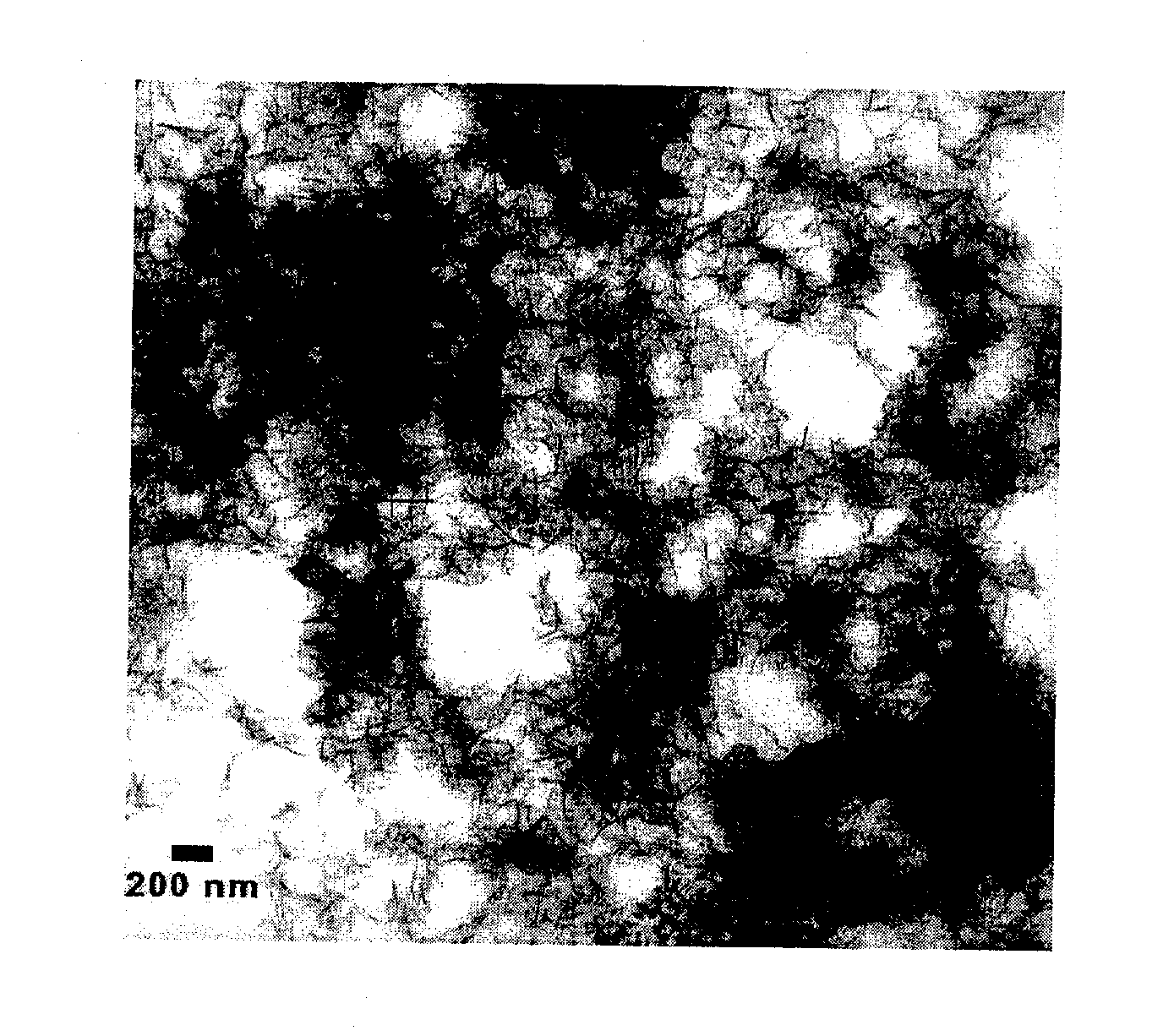Preparation and Applications of Stabilized Metal Nanoparticles for Dechlorination of Chlorinated Hydrocarbons in Soils, Sediments, and Ground Water
a technology of chlorinated hydrocarbons and nanoparticles, applied in the field of nanomaterials, can solve the problems of high cost, ineffective control of delivery and distribution, and difficulty in rehabilitating soils and groundwater, and achieve the effects of low cost, cost-effectiveness, and increased degradation ra
- Summary
- Abstract
- Description
- Claims
- Application Information
AI Technical Summary
Benefits of technology
Problems solved by technology
Method used
Image
Examples
Embodiment Construction
[0047]The stabilized, chemically reactive, metallic nano-material of the present invention is composed of a magnetic metal nanoparticle, and a stabilizer comprising a carbohydrate bound to the nanoparticle. The magnetic metal nanoparticle may be iron, zinc, nickel, cobalt, copper, manganese and alloys of these metals. The preferred metal nanoparticle is iron. As described herein, ferrous (Fe2+) or ferric (Fe3+) iron is reduced to zero valent iron (Fe+) when producing the metallic nano-material of the present invention. The metallic nanoparticle has an average particle size of less than 100 nanometers, but preferably has an average particle size of about 10 to about 20 nanometers. For discrete, non-porous nanoparticles such as those described herein, the particle size determines the surface area. The surface area (S) is inversely related to the particle radius (r) via the following relationship
r=3[ρS]−1
where ρ is the density of the metal, e.g. for iron ρ equals 7,870 kg / m3. Therefor...
PUM
| Property | Measurement | Unit |
|---|---|---|
| particle size | aaaaa | aaaaa |
| particle size | aaaaa | aaaaa |
| concentration | aaaaa | aaaaa |
Abstract
Description
Claims
Application Information
 Login to View More
Login to View More - R&D
- Intellectual Property
- Life Sciences
- Materials
- Tech Scout
- Unparalleled Data Quality
- Higher Quality Content
- 60% Fewer Hallucinations
Browse by: Latest US Patents, China's latest patents, Technical Efficacy Thesaurus, Application Domain, Technology Topic, Popular Technical Reports.
© 2025 PatSnap. All rights reserved.Legal|Privacy policy|Modern Slavery Act Transparency Statement|Sitemap|About US| Contact US: help@patsnap.com



